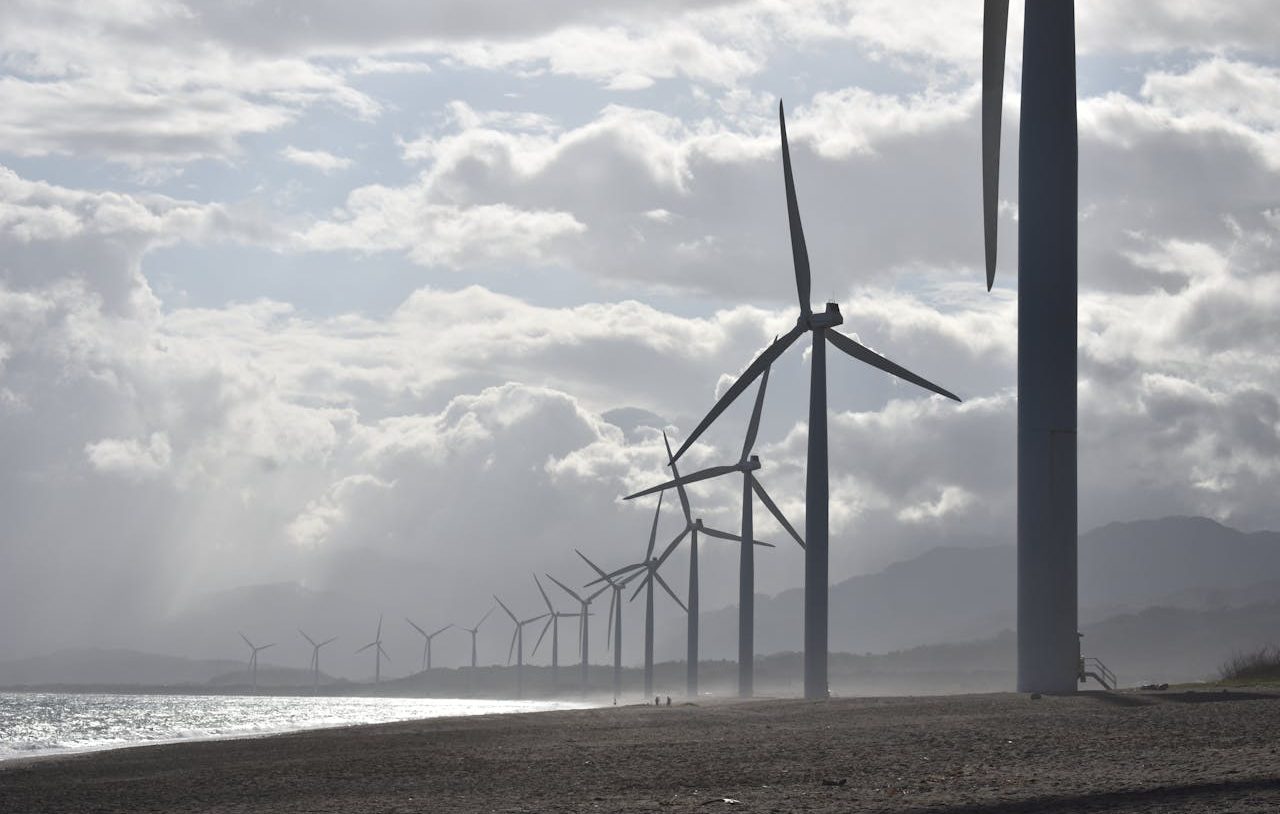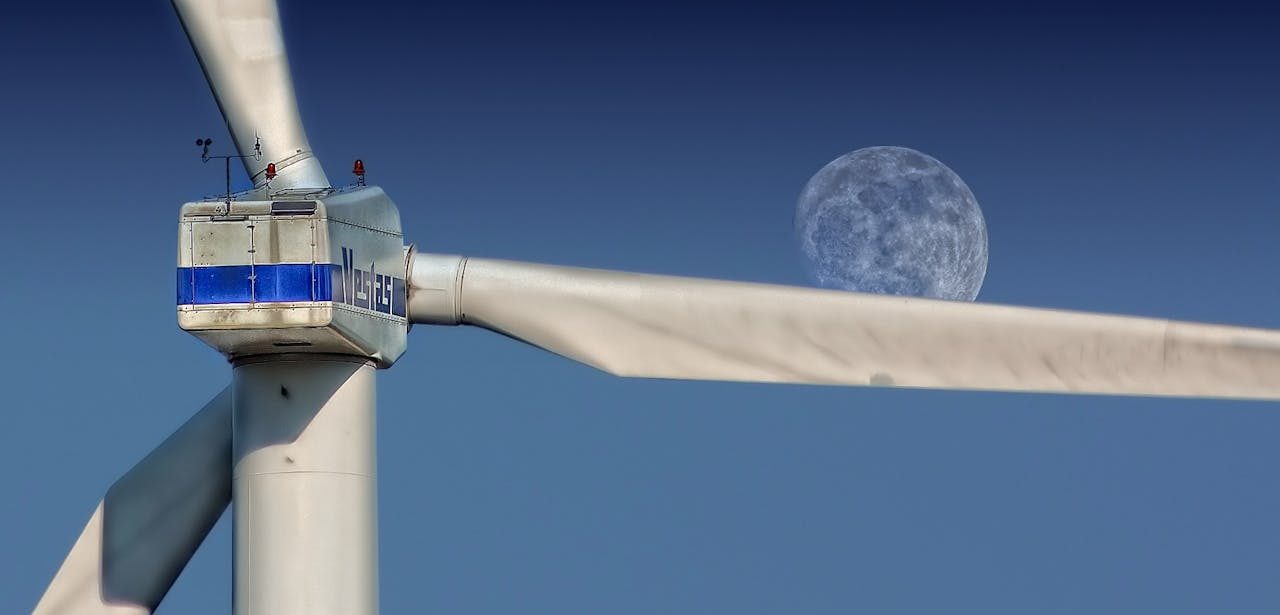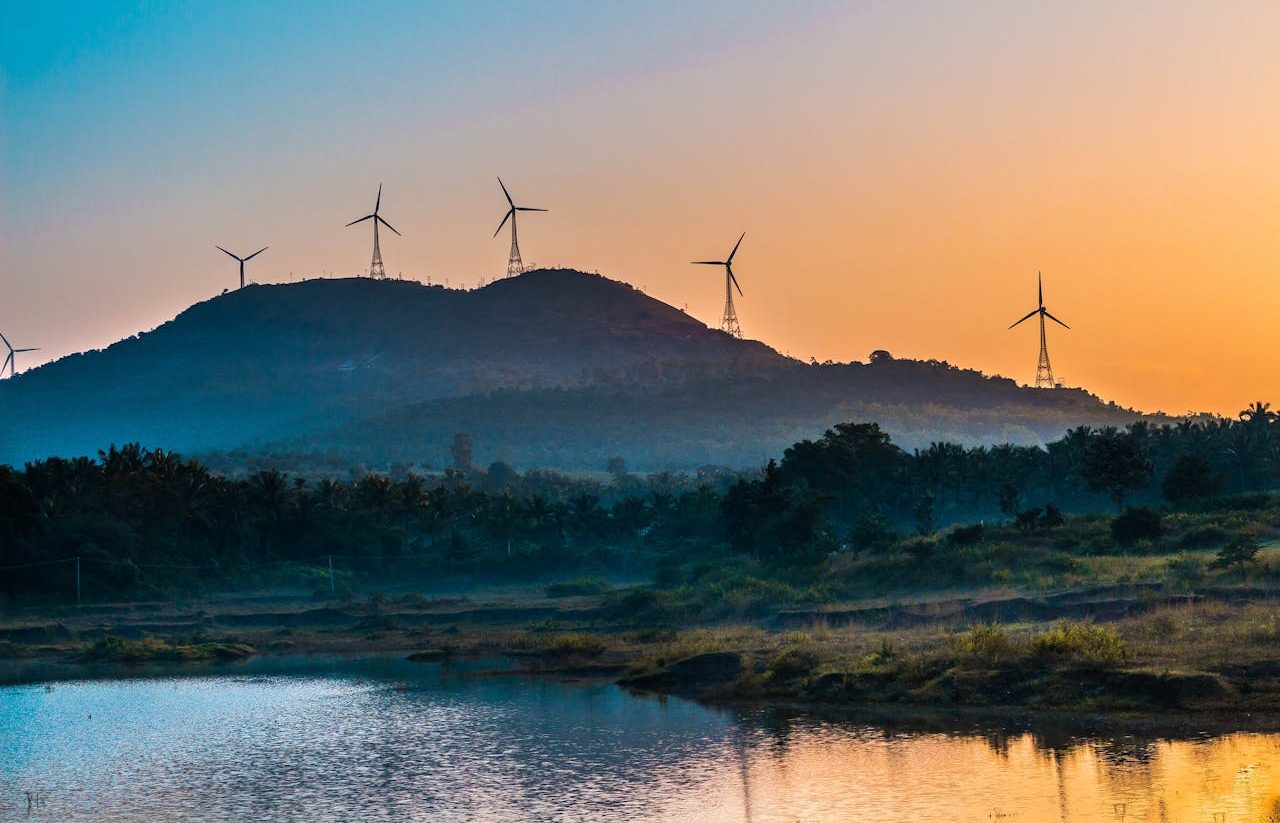
The wind turbine produces electrical energy from the kinetic energy of the wind.
A wind turbine is a device that converts the kinetic energy of the wind into electrical energy by rotating its blades. As they move, the blades drive an electrical generator that produces clean, renewable electricity. This type of technology is essential in the production of sustainable energy and contributes to reducing the use of fossil fuels.
Types of wind turbine
Wind turbines are classified mainly based on the orientation of their axis and the place where they are installed:
- Horizontal axis turbines (HAWT) : These are the most common and efficient, with an axis parallel to the ground. Ideal for large wind farms;
- Vertical axis turbines (VAWT) – capture wind from any direction. They are useful in urban areas or with variable winds.
Additionally, they can be classified by their location and scale:
- terrestrial vs. maritime ( offshore ) : land turbines are installed on land, while maritime turbines are located on the high seas, where the winds are stronger and more constant, allowing for greater energy production;
- small, medium and large scale : Small scale turbines generate energy for domestic or local use, while medium and large scale turbines are designed to produce energy at an industrial level or for the electrical grid.
Energy sources and their classification
The world of energy is divided into various sources that can be grouped according to their sustainability and environmental impact.
Renewable energy
Produced from inexhaustible natural sources, such as the sun, wind and water. It is key in the energy transition to reduce dependence on fossil fuels.
wind energy
Generated through the use of wind, it is one of the main forms of green energy due to its low environmental impact.
Solar energy
It takes advantage of the sun's radiation to generate electricity or heat, being another form of alternative and green energy.
Hydroelectric power
It produces electricity by taking advantage of the power of moving water, such as rivers or reservoirs.
Geothermal energy
Generated from the Earth's internal heat, it is used mainly for heating and electricity production.
Sea energy
It groups together different forms of generation, such as tidal energy (caused by differences in sea levels) and wave energy (produced by the movement of waves).
Nuclear power
It uses the fission of atoms to generate large amounts of energy, but comes with challenges in terms of radioactive waste.
fossil energy
It includes fuels such as coal, oil and natural gas. Although it remains dominant, it is a finite and highly polluting source.
Decentralized energy
It involves generating energy close to the point of consumption, using renewable technologies such as solar panels or small wind turbines, reducing dependence on large power plants.

The rotor, the blades and the wind turbine are three fundamental components of the wind turbine.
Operating principles
The operation of a wind turbine is based on the conversion of the kinetic energy of the wind into electrical energy . This process occurs thanks to the interaction of several components, which are detailed below.
wind rotor
The part of the turbine that rotates when driven by the wind. It is made up of several turbine blades, usually between two and three, which are streamlined to maximize the capture of energy from the wind.
turbine blade
This structure captures the wind and converts it into rotational motion. Its length and shape directly influence the efficiency of the turbine.
turbine tower
The structure that raises the rotor and wind turbine to a higher altitude, where the winds are stronger and more constant. Its height varies depending on the size and location of the turbine.
Wind turbine
The heart of the system, where the kinetic energy of the rotor is converted into electrical energy by a generator. It includes components such as the shaft and gearbox, which increase the rotation speed before it reaches the generator.
Nacelle
This casing, located at the top of the tower, contains the wind turbine and protects its components from the environment.
Guidance system
It is responsible for keeping the rotor aligned with the direction of the wind, ensuring that the blades capture the maximum energy available.
Green energy and environment
The move towards a more sustainable world is driven by the adoption of clean technology that minimizes the negative impact on the environment. Among the keys to this change is energy efficiency, which seeks to maximize the use of natural resources while reducing waste and CO2 emissions , contributing to the fight against climate change and global warming.
Investment in green energy has been crucial to accelerate this transition, with projects such as wind farms, solar parks and the use of biofuels that generate energy with a lower carbon footprint . Emissions control is also an important focus, with regulations to reduce polluting gases and improve conversion efficiency in energy generation processes.
International agreements such as the Kyoto Protocol and the Paris Agreement have been fundamental in establishing emissions reduction goals and promoting environmental legislation that promotes sustainable policies. At the local level, the energy policy of many countries includes subsidies for green energy, incentivizing the adoption of renewable technologies. In addition, LEED certification , among others, recognizes efforts to build energy-efficient and environmentally friendly buildings.
This holistic approach seeks to mitigate climate change and ensure a cleaner, more sustainable future for future generations.

Wind turbine technology is key to sustainable development.
Innovation and sustainability
Sustainable development has become a central axis for the planning and execution of projects in various areas, including sustainable agriculture, architecture and urban planning. The integration of technological innovation is key to optimizing resources, improving efficiency and minimizing environmental impact.
In the energy field, energy storage through advanced batteries and smart grid systems is transforming the way energy is managed and distributed. Microgrids allow communities and businesses to be energy self-sufficient, contributing to energy conservation and resilience to blackouts.
Green building design and sustainable architecture also play a crucial role in reducing energy consumption. In this context, sustainable urbanism seeks more efficient cities, with infrastructure that minimizes the environmental footprint.
Social commitment is another pillar of sustainable development, promoting awareness about the importance of these changes. Advances in research and development continue to open new opportunities to improve the efficiency of energy systems and the sustainability of communities.
